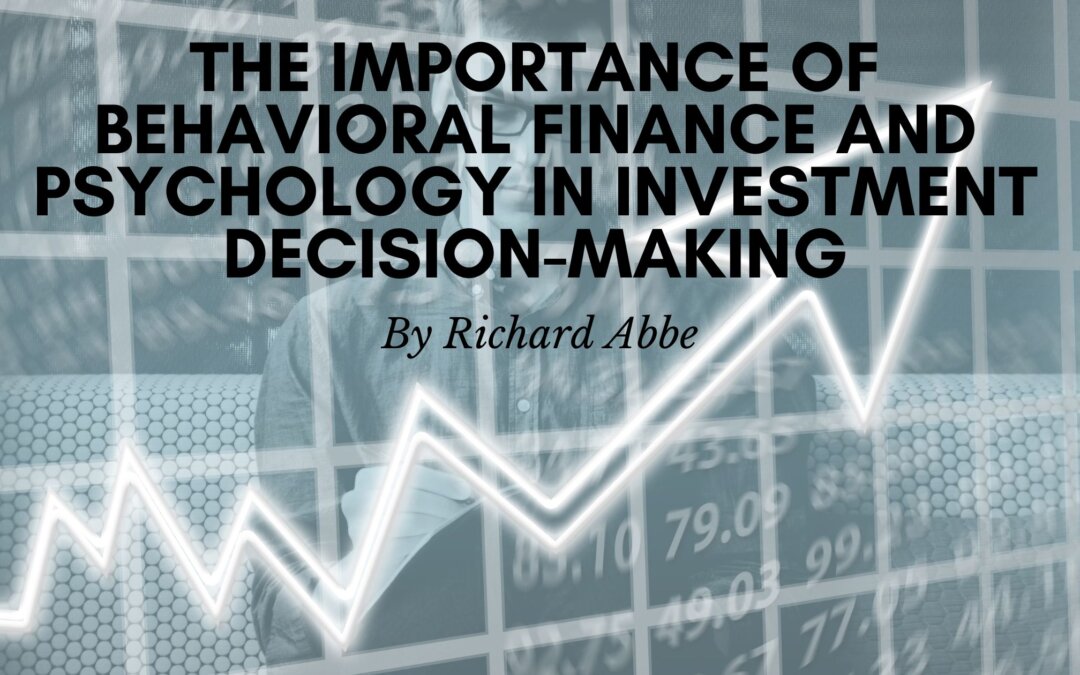Investing is about more than crunching numbers and analyzing market trends. The human element plays a significant role in investment decision-making. Behavioral finance and psychology provide valuable insights into understanding how emotions, biases, and cognitive errors influence investment choices. We will explore the importance of behavioral finance and psychology in making informed investment decisions.
Emotions and Decision-Making
Emotions often drive our actions, even in the realm of investing. Greed, fear, and overconfidence can cloud our judgment and lead to irrational investment decisions. Understanding the impact of emotions is crucial to avoid impulsive actions that can harm our investment portfolios.
For instance, during a market rally, euphoria may tempt us to invest heavily without considering the underlying fundamentals. On the other hand, during a market downturn, fear may push us to sell off investments prematurely, missing out on potential long-term gains. We can make more rational decisions by recognizing and managing these emotional biases.
Cognitive Biases and Errors
Humans are prone to cognitive biases, distorting our perceptions and decision-making abilities. Behavioral finance sheds light on various biases, such as confirmation bias (favoring information that supports existing beliefs), availability bias (relying on readily available data), and anchoring bias (over-reliance on initial information).
Understanding these biases helps investors recognize when they are affecting their decisions. By actively seeking diverse perspectives, challenging assumptions, and conducting thorough research, investors can reduce the impact of biases and make more objective choices.
Herd Mentality and Market Bubbles
The behavior of crowds can significantly influence investment markets. The phenomenon known as herd mentality describes individuals’ tendency to follow a larger group’s actions, often disregarding their analysis or research. This type of behavior can lead to the formation of market bubbles, where asset prices become detached from their intrinsic values.
During the dot-com bubble of the late 1990s or the housing market bubble that led to the 2008 financial crisis, herd mentality played a significant role in driving excessive speculation and overvaluation. Behavioral finance highlights the importance of independent thinking and not succumbing to the herd mentality. Investors who identify market bubbles and make informed decisions based on fundamentals will likely avoid significant losses.
Long-Term Investing and Patience
Behavioral finance emphasizes the importance of long-term investing and patience. Our natural inclination for instant gratification can lead us to chase short-term gains, often resulting in higher trading costs and lower overall returns. By understanding the psychology behind these impulses, we can resist the urge to tinker with our portfolios constantly and instead adopt a long-term investment strategy.
Risk Perception and Loss Aversion
Risk perception and loss aversion are crucial aspects of investment decision-making. Behavioral finance acknowledges that individuals often have different risk tolerance levels and react differently to gains and losses. Loss aversion refers to the human tendency to experience the pain of losses more acutely than the pleasure of gains.
Understanding our risk preferences and managing our loss aversion can help us construct investment portfolios that align with our individual goals and comfort levels. By being aware of these biases, we can make more balanced decisions and avoid panic selling or taking excessive risks.
Conclusion
In the investing world, behavioral finance and psychology provide valuable insights into the factors influencing our decision-making processes. Emotions, biases, and cognitive errors can impact our investment choices, often leading to suboptimal outcomes. By recognizing these influences, investors can take steps to manage their emotions, mitigate biases, and make more rational, informed decisions. Incorporating the principles of behavioral finance and psychology into our investment strategies can ultimately lead to better long-term outcomes and financial success.

